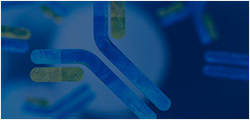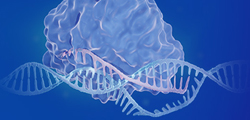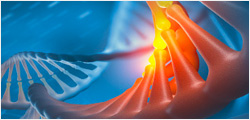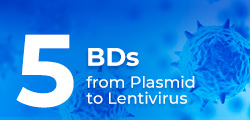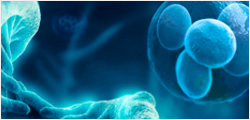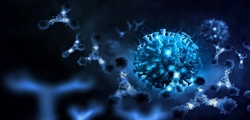-
REAGENT SERVICES
Hot!
-
Most Popular Services
-
Molecular Biology
-
Recombinant Antibody/Protein
-
Reagent Antibody
-
CRISPR Gene Editing
-
DNA Mutant Library
-
IVT RNA and LNP Formulations
-
Oligo Synthesis
-
Peptides
-
Cell Engineering
-
- Gene Synthesis FLASH Gene
- GenBrick™ Up to 200kb
- Gene Fragments Up to 3kb now
- Plasmid DNA Preparation Upgraded
- Cloning and Subcloning
- ORF cDNA Clones
- mRNA Plasmid Solutions New!
- Cell free mRNA Template New!
- AAV Plasmid Solutions New!
- Mutagenesis
- GenCircle™ Double-Stranded DNA New!
- GenSmart™ Online Tools
-
-
PRODUCTS
-
Most Popular Reagents
-
 Instruments
Instruments
-
Antibodies
-
ELISA Kits
-
Protein Electrophoresis and Blotting
-
Protein and Antibody Purification
-
Recombinant Proteins
-
Molecular Biology
-
Stable Cell Lines
-
Cell Isolation and Activation
-
 IVD Raw Materials
IVD Raw Materials
-
 Therapy Applications
Therapy Applications
-
Resources
-
- All Instruments
- Automated Protein and Antibody Purification SystemNew!
- Automated Plasmid MaxiprepHot!
- Automated Plasmid/Protein/Antibody Mini-scale Purification
- eBlot™ Protein Transfer System
- eStain™ Protein Staining System
- eZwest™ Lite Automated Western Blotting Device
- CytoSinct™ 1000 Cell Isolation Instrument
-
- Pharmacokinetics and Immunogenicity ELISA Kits
- Viral Titration QC ELISA Kits
- -- Lentivirus Titer p24 ELISA KitHot!
- -- MuLV Titer p30 ELISA KitNew!
- -- AAV2 and AAVX Titer Capsid ELISA Kits
- Residual Detection ELISA Kits
- -- T7 RNA Polymerase ELISA KitNew!
- -- BSA ELISA Kit, 2G
- -- Cas9 ELISA KitHot!
- -- Protein A ELISA KitHot!
- -- His tagged protein detection & purification
- dsRNA ELISA Kit
- Endonuclease ELISA Kit
- COVID-19 Detection cPass™ Technology Kits
-
- Automated Maxi-Plasmid PurificationHot!
- Automated Mini-Plasmid PurificationNew!
- PCR Reagents
- S.marcescens Nuclease Benz-Neburase™
- DNA Assembly GenBuilder™
- Cas9 / Cas12a / Cas13a Nucleases
- Base and Prime Editing Nucleases
- GMP Cas9 Nucleases
- CRISPR sgRNA Synthesis
- HDR Knock-in Template
- CRISPR Gene Editing Kits and Antibodies
-
![AmMag™ Quatro Automated Plasmid Purification]() AmMag™ Quatro automated plasmid purification
AmMag™ Quatro automated plasmid purification
-
![Anti-Camelid VHH]() MonoRab™ Anti-VHH Antibodies
MonoRab™ Anti-VHH Antibodies
-
![ELISA Kits]() ELISA Kits
ELISA Kits
-
![Precast Gels]() SurePAGE™ Precast Gels
SurePAGE™ Precast Gels
-
![Quatro ProAb Automated Protein and Antibody Purification System]() AmMag™ Quatro ProAb Automated Protein and Antibody Purification System
AmMag™ Quatro ProAb Automated Protein and Antibody Purification System
-
![Target Proteins]() Target Proteins
Target Proteins
-
![AmMag™ Quatro Automated Plasmid Purification]() AmMag™ Quatro automated plasmid purification
AmMag™ Quatro automated plasmid purification
-
![Stable Cell Lines]() Stable Cell Lines
Stable Cell Lines
-
![Cell Isolation and Activation]() Cell Isolation and Activation
Cell Isolation and Activation
-
 IVD Raw Materials
IVD Raw Materials
-
![Quick
Order]() Quick Order
Quick Order
-
![Quick
Order]() Quick Order
Quick Order
- APPLICATIONS
- RESOURCES
- ABOUT US
- SIGN IN My Account SIGN OUT
- REGISTER
Resources » Reference Databases » Citations Database
Services & ProductsNews & Blogs- GMP CAR-T cell production
- Alteration of tumor microenvironment to achieve better anti-tumor effects
- From Bispecific to Trispecific Antibodies in Cancer Immunotherapy
- Boosting CAR-T cells with mRNA Vaccines: New Immunotherapy Strategy
- Why are CHO Cells Critical in Bioprocessing?
- GenScript takes immediate actions to support research and diagnostics of 2019 novel coronavirus
- Evidence for Enduring Neurogenesis in Adult Brains
- Overcoming Antibiotic Resistance with CRISPR
For each citation that was shared on social media (LinkedIn, Facebook, or Twitter) with the “@GenScript” tag, the author will be rewarded with a $10 Amazon gift card or 2,000 GS points.Role for the Kunitz-3 Domain of Tissue Factor Pathway Inhibitor-α in Cell Surface Binding.
Circulation.. 2004-12; 280(14):14325-14330Orlando Piro and George J. Broze, Jr. Division of Hematology, Washington University School of Medicine, St Louis, Mo, USA.Products/Services Used Details Operation Gene Synthesis hairpin RNA targeting the sequence -CAGAUUCUACUACAAUUCA- in TFPI-{alpha} mRNA was cloned in the vector pRNA-H1.1/Neo (GenScript) under the control of the H1 promoter for RNA polymerase III. Get A Quote Abstract
BACKGROUND: Tissue factor pathway inhibitor (TFPI)-alpha, a key regulator of tissue factor-induced coagulation, contains 3 tandem Kunitz-type inhibitory domains. Kunitz-1 binds and inhibits factor VIIa in the factor VIIa/tissue factor complex, and Kunitz-2 binds and inhibits factor Xa. The role of the Kunitz-3 domain of TFPI-alpha, however, has remained an enigma. METHODS AND RESULTS: To determine the structures within TFPI-alpha involved in its binding to cell surface, altered forms of TFPI-alpha were expressed in C127 (mouse mammary) cells: C-terminal truncated forms TFPI-alpha (252), TFPI-alpha (242), and TFPI-alpha (181), which also lacks the third Kunitz domain (K3); TFPI-alpha (desK3), which lacks ... More
BACKGROUND: Tissue factor pathway inhibitor (TFPI)-alpha, a key regulator of tissue factor-induced coagulation, contains 3 tandem Kunitz-type inhibitory domains. Kunitz-1 binds and inhibits factor VIIa in the factor VIIa/tissue factor complex, and Kunitz-2 binds and inhibits factor Xa. The role of the Kunitz-3 domain of TFPI-alpha, however, has remained an enigma. METHODS AND RESULTS: To determine the structures within TFPI-alpha involved in its binding to cell surface, altered forms of TFPI-alpha were expressed in C127 (mouse mammary) cells: C-terminal truncated forms TFPI-alpha (252), TFPI-alpha (242), and TFPI-alpha (181), which also lacks the third Kunitz domain (K3); TFPI-alpha (desK3), which lacks only the K3 domain; and TFPI-alpha (R199L), in which the putative P1 site in K3 is changed from arginine to leucine. By flow cytometry (fluorescence-activated cell sorting), the altered forms 252, 242, and R199L showed significantly reduced binding, whereas the forms 181 and desK3 completely failed to bind to the cell surface. Transient expression of WT-, desK3-, and K3/K2-TFPI-alpha (in which K3 is replaced with K2) in another cell line (b-end3, mouse endothelial) produced comparable results. Exogenously added C-terminal truncated and R199L forms of TFPI-alpha bound poorly and desK3 did not bind at all to the surface of ECV304 cells in which TFPI-alpha expression had been "knocked down" by RNA interference. CONCLUSIONS: Optimal cell binding of endogenously expressed TFPI-alpha requires its K3 and C-terminal domains, and within the K3 domain, the P1 (R199) residue plays an important role. Thus, one role of the K3 domain involves the cell surface localization of TFPI-alpha.Keywords
coagulation; inhibitors; endothelium-derived factors
-



